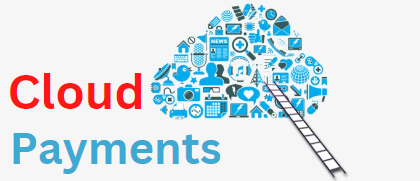How APIs Are Revolutionizing Cloud Payments
In today’s digital era, the integration of technology has transformed various industries, including the financial sector. One of the significant advancements in this domain is the use of Application Programming Interfaces (APIs) in cloud payments. APIs have revolutionized the way payments are processed, making transactions faster, more secure, and highly customizable.
This comprehensive guide will delve into the world of APIs in cloud payments, exploring their evolution, benefits, key players, integration methods, user experience enhancements, compliance challenges, and frequently asked questions.
Understanding APIs: A Primer on Application Programming Interfaces
Before delving into the impact of APIs on cloud payments, it is essential to understand what APIs are and how they function. APIs are sets of rules and protocols that allow different software applications to communicate and interact with each other. They act as intermediaries, enabling the exchange of data and functionality between different systems.
APIs come in various forms, including web APIs, which facilitate communication between web-based applications, and cloud APIs, which enable interaction with cloud-based services. In the context of cloud payments, APIs serve as the bridge between payment service providers, merchants, and consumers, facilitating secure and efficient transactions.
The Advantages of Cloud Payments: Efficiency, Scalability, and Security
Cloud payments offer several advantages over traditional payment methods, making them an attractive option for businesses and consumers alike. One of the key benefits is increased efficiency. With cloud payments, transactions can be processed in real-time, eliminating the need for manual intervention and reducing the risk of errors. This speed and automation result in faster payment processing and improved cash flow for businesses.
Scalability is another advantage of cloud payments. As businesses grow and their transaction volumes increase, cloud payment systems can easily scale to accommodate the higher demand. This scalability ensures that businesses can handle peak periods without experiencing any disruptions or delays in payment processing.
Security is a paramount concern when it comes to payments, and cloud payments offer robust security measures. By leveraging APIs, payment service providers can implement advanced encryption and tokenization techniques to protect sensitive customer data. Additionally, cloud payment systems often undergo rigorous security audits and comply with industry standards to ensure the highest level of data protection.
How APIs Enable Seamless Integration of Payment Systems in the Cloud
APIs play a crucial role in enabling the seamless integration of payment systems in the cloud. By providing a standardized interface, APIs allow different payment service providers to connect and exchange data securely. This interoperability ensures that merchants can accept payments from various sources, including credit cards, digital wallets, and bank transfers, without the need for multiple integrations.
Furthermore, APIs enable real-time communication between payment systems and other business applications. For example, an e-commerce platform can use APIs to retrieve payment status updates, process refunds, or generate invoices automatically. This integration eliminates manual tasks and streamlines the payment process, enhancing overall efficiency.
Exploring the Different Types of APIs Used in Cloud Payments
There are several types of APIs used in cloud payments, each serving a specific purpose. Payment Gateway APIs are one of the most common types and act as the interface between merchants and payment processors. These APIs facilitate the authorization and settlement of transactions, allowing merchants to accept payments securely.
Another type of API used in cloud payments is the Tokenization API. Tokenization involves replacing sensitive payment data, such as credit card numbers, with unique tokens. These tokens are then used for payment processing, reducing the risk of data breaches and enhancing security. Tokenization APIs enable the generation and management of these tokens, ensuring that sensitive data remains protected.
Additionally, there are APIs that enable integration with digital wallets, such as Apple Pay and Google Pay. These APIs allow merchants to accept payments from customers using these popular digital wallet services, providing a seamless and convenient payment experience.
Leveraging APIs for Real-Time Payment Processing and Authorization
Real-time payment processing and authorization are critical for businesses that require instant confirmation of payment. APIs enable this functionality by facilitating real-time communication between payment systems and financial institutions. When a customer initiates a payment, the API sends a request to the relevant financial institution, which then processes the transaction and provides an immediate response.
This real-time processing is particularly beneficial for industries such as travel and hospitality, where instant confirmation of payment is essential. For example, when booking a hotel room online, customers expect to receive immediate confirmation of their reservation upon completing the payment. APIs make this possible by enabling seamless communication between the hotel’s payment system and the customer’s bank.
Enhancing User Experience with APIs: Customization and Personalization
APIs also play a crucial role in enhancing the user experience of cloud payment systems. By leveraging APIs, businesses can customize and personalize the payment process to align with their brand and meet the specific needs of their customers.
For example, APIs allow businesses to embed payment forms directly into their websites or mobile applications, providing a seamless and branded payment experience. This integration eliminates the need for customers to be redirected to external payment pages, enhancing trust and reducing friction in the payment process.
Furthermore, APIs enable businesses to offer personalized payment options based on customer preferences. For instance, an e-commerce platform can use APIs to remember a customer’s preferred payment method and automatically display it as the default option during checkout. This level of customization enhances convenience and improves the overall user experience.
Overcoming Challenges: Ensuring Data Privacy and Compliance in Cloud Payments
While cloud payments offer numerous benefits, they also present challenges in terms of data privacy and compliance. As payment data is transmitted and stored in the cloud, it is crucial to ensure that appropriate security measures are in place to protect sensitive information.
APIs can help address these challenges by enabling the implementation of robust security measures. For example, APIs can facilitate the encryption of payment data during transmission, ensuring that it remains secure and protected from unauthorized access. Additionally, APIs can enforce strict access controls, allowing only authorized parties to interact with payment systems and ensuring compliance with data protection regulations.
Furthermore, APIs can assist in compliance with industry standards such as the Payment Card Industry Data Security Standard (PCI DSS). By integrating with APIs that are PCI DSS compliant, businesses can ensure that their payment systems meet the necessary security requirements and reduce the risk of data breaches.
The Future of Cloud Payments: Emerging Trends and Innovations
As technology continues to evolve, the future of cloud payments holds several exciting possibilities. One emerging trend is the use of Artificial Intelligence (AI) and Machine Learning (ML) in payment systems. APIs can enable the integration of AI and ML algorithms, allowing payment systems to analyze transaction data in real-time and detect fraudulent activities more effectively.
Another innovation on the horizon is the use of blockchain technology in cloud payments. APIs can facilitate the integration of blockchain-based payment systems, enabling secure and transparent transactions. Blockchain’s decentralized nature and immutability make it an attractive option for enhancing the security and traceability of payments.
Furthermore, the Internet of Things (IoT) is expected to play a significant role in the future of cloud payments. APIs can enable the integration of IoT devices with payment systems, allowing for seamless and secure transactions. For example, a smart refrigerator could automatically reorder groceries and make payments on behalf of the user, leveraging APIs to communicate with the payment system.
Frequently Asked Questions (FAQs) about APIs in Cloud Payments
Q.1: What is an API, and how does it relate to cloud payments?
An API, or Application Programming Interface, is a set of rules and protocols that allows different software systems to communicate and exchange data. In the context of cloud payments, APIs enable businesses to connect their payment gateways with cloud-based platforms, facilitating secure and efficient payment processing.
Q.2: How do APIs enhance security in cloud payments?
APIs enhance security in cloud payments through various mechanisms, such as tokenization, two-factor authentication (2FA), and biometric authentication. APIs enable businesses to replace sensitive payment data with unique tokens, reducing the risk of data breaches. Additionally, APIs facilitate the implementation of additional security measures, ensuring that only authorized individuals can initiate and authorize payments.
Q.3: How do APIs simplify payment processing in the cloud?
APIs simplify payment processing in the cloud by providing a standardized and streamlined approach. Instead of developing complex integrations with multiple payment gateways, businesses can utilize APIs to connect their cloud applications directly to the payment infrastructure. This simplification reduces development time and costs, allowing businesses to focus on their core competencies.
Q.4: How can businesses leverage APIs to enhance the user experience in cloud payments?
Businesses can leverage APIs to enhance the user experience in cloud payments through customization and personalization. By utilizing APIs, businesses can tailor the payment process to align with their brand identity and user preferences. This includes customizing the payment interface, adding branding elements, and providing a consistent user experience across different devices and platforms.
Q.5: What are the compliance and data privacy challenges associated with API-driven cloud payments?
API-driven cloud payments present challenges related to compliance and data privacy. Businesses must ensure that their API integrations comply with industry regulations, such as the Payment Card Industry Data Security Standard (PCI DSS) and the General Data Protection Regulation (GDPR). To address these challenges, businesses should partner with PSPs and FinTech companies that prioritize compliance and data privacy, implementing robust security measures and access controls.
Conclusion
The integration of APIs in cloud payments has revolutionized the way transactions are processed, offering numerous benefits for businesses, payment service providers, and consumers. APIs simplify payment processing, enhance security, and enable seamless integration of payment gateways into cloud applications. They also empower businesses to enhance the user experience through customization and personalization.
However, businesses must ensure compliance and data privacy when leveraging APIs in cloud payments. By understanding the role of APIs and partnering with reliable PSPs and FinTech companies, businesses can unlock the full potential of API-driven cloud payments and stay ahead in the rapidly evolving digital landscape.











